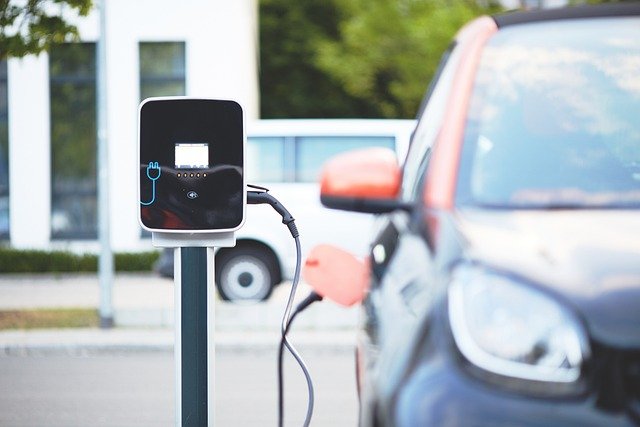Drive the Future: Discover Electric Cars in the USA!
Electric cars are revolutionizing the way we move, offering a sustainable, economical, and innovative alternative for modern drivers worldwide. If you dream of owning an electric vehicle, now is the best time to take advantage of special purchase and financing conditions available across the country.

Why Choose an Electric Car in the USA?
Choosing an electric vehicle in America comes with compelling advantages that extend beyond environmental benefits. Electric cars produce zero direct emissions, significantly reducing your carbon footprint while contributing to cleaner air quality in local communities. The instant torque delivery provides smooth, quiet acceleration that creates a superior driving experience compared to traditional gasoline engines.
American electric car owners also enjoy reduced dependence on fluctuating gas prices and foreign oil imports. With electricity rates generally more stable than petroleum prices, budgeting for transportation costs becomes more predictable. Additionally, electric vehicles require less maintenance since they have fewer moving parts than conventional cars, eliminating oil changes and reducing wear on brake systems through regenerative braking technology.
How Does Purchase and Financing of Electric Cars Work?
The purchase and financing process for electric vehicles in the USA mirrors traditional car buying but with additional incentive opportunities. Most major automakers now offer electric models through their standard dealer networks, providing familiar financing options including loans, leases, and certified pre-owned programs.
Federal tax credits up to $7,500 are available for qualifying new electric vehicles, though eligibility varies by manufacturer and model. Many states offer additional rebates, tax credits, or HOV lane access that can substantially reduce effective purchase prices. Some utilities provide rebates for electric car purchases, and workplace charging programs may offer additional savings.
Leasing has become particularly popular for electric vehicles, allowing drivers to access newer technology while avoiding concerns about battery longevity or rapid technological advancement. Many manufacturers offer attractive lease deals with low monthly payments to encourage electric vehicle adoption.
What Are the Economic Advantages of Electric Cars?
Electric vehicles deliver significant long-term economic benefits that often outweigh higher upfront costs. Electricity typically costs less per mile than gasoline, with the average American spending about 60% less on fuel costs when driving electric. Home charging during off-peak hours can further reduce operating expenses.
Maintenance savings accumulate over time since electric cars don’t require oil changes, spark plug replacements, or transmission repairs. Brake pads last longer due to regenerative braking, and electric motors have fewer components that can fail compared to internal combustion engines.
Insurance costs for electric vehicles have become increasingly competitive as the technology matures and repair networks expand. Some insurers offer discounts for electric vehicle owners, recognizing their typically lower accident rates and responsible driving patterns.
What Is the State of Charging Infrastructure in the USA?
America’s electric vehicle charging infrastructure has expanded rapidly, with over 60,000 public charging stations now operating nationwide. The network includes Level 2 chargers for daily use and DC fast chargers for long-distance travel, with major corridors between cities increasingly well-covered.
Companies like Tesla, Electrify America, ChargePoint, and EVgo have built extensive charging networks, while retailers such as Walmart, Target, and grocery chains increasingly offer charging at their locations. The federal Infrastructure Investment and Jobs Act allocated $7.5 billion for expanding charging infrastructure, promising significant network growth in coming years.
Most electric vehicle owners charge primarily at home using standard 240-volt outlets, making daily charging convenient and cost-effective. Workplace charging programs are expanding, allowing employees to charge during work hours and extending electric vehicle range for longer commutes.
| Vehicle Model | Manufacturer | Starting Price | Range (EPA Est.) |
|---|---|---|---|
| Tesla Model 3 | Tesla | $38,990 | 272-358 miles |
| Chevrolet Bolt EV | General Motors | $31,995 | 259 miles |
| Ford Mustang Mach-E | Ford | $42,895 | 247-312 miles |
| Nissan Leaf | Nissan | $28,140 | 149-212 miles |
| BMW iX3 | BMW | $54,200 | 324 miles |
Prices, rates, or cost estimates mentioned in this article are based on the latest available information but may change over time. Independent research is advised before making financial decisions.
What Are the Future Prospects for Electric Cars in the USA?
The future of electric vehicles in America appears exceptionally promising, with automakers committing billions to electrification initiatives. Major manufacturers including General Motors, Ford, and Stellantis have announced plans to transition significant portions of their lineups to electric power within the next decade.
Battery technology continues advancing rapidly, with costs declining and energy density improving. Next-generation batteries promise faster charging times, longer ranges, and extended lifespans that will make electric vehicles even more practical for American drivers.
Government support remains strong at federal and state levels, with policies encouraging domestic battery production and charging infrastructure development. The growing emphasis on energy independence and environmental responsibility suggests continued political support for electric vehicle adoption incentives.
The combination of improving technology, expanding infrastructure, and strong policy support positions electric vehicles to become mainstream transportation options for American families. As charging becomes as convenient as refueling and vehicle prices achieve parity with conventional cars, electric vehicle adoption is expected to accelerate significantly throughout the United States, fundamentally transforming how Americans approach personal transportation.




